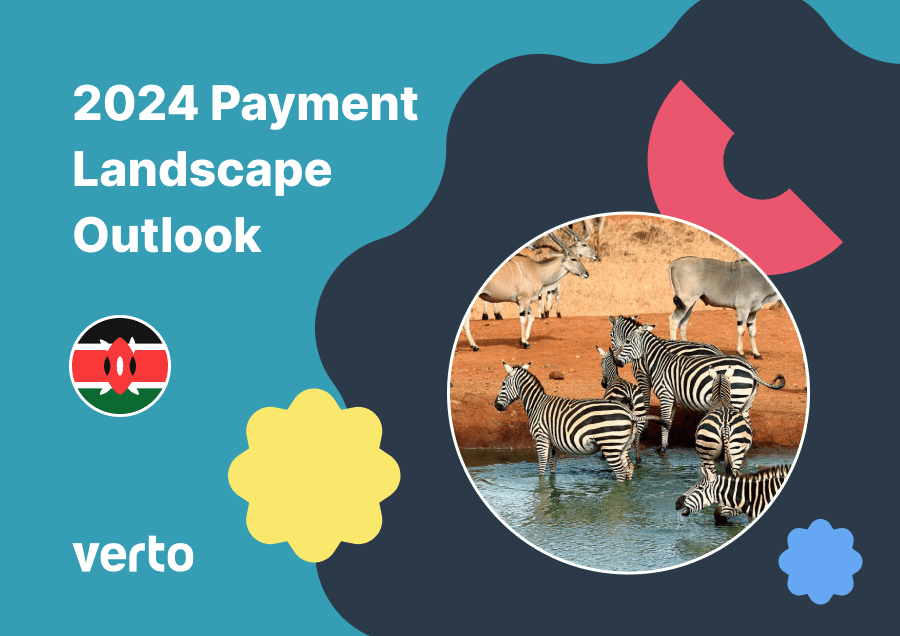
By Oluwatofunmi Alo
In 2023, Kenya’s Central Bank initially projected a robust GDP of 6% in 2024. However, this optimism encountered a reality check driven by unpredictable weather which could affect output from the agricultural sector prompting a downward revision to 5.5%. In this article, we take a closer look at dynamic transformations shaping the future of payments in Kenya in 2024 as it navigates crypto regulations, digital payment revolutions, and the ever-resilient agricultural landscape.
More regulation in crypto as government eyes tax revenue
Kenya has emerged as a significant player in the African cryptocurrency landscape, ranking as the third most active Bitcoin asset trader on the continent. Additionally, the country boasts the third-largest web traffic to cryptocurrency sites and holds the 21st position in global crypto adoption. Notably, over 4 million people, equivalent to approximately 8.5% of Kenya’s total population, are estimated to own cryptocurrency.
Despite its popularity, the legal status of cryptocurrency in Kenya remains somewhat ambiguous. While it is not recognised as legal tender or an official asset, the Kenyan government’s approach to crypto legislation has been a subject of intrigue. On September 1, 2023, an amendment to Kenya’s Financial Act 2023 took effect, introducing a 3% tax on income derived from transferring or exchanging digital assets. This move, however, triggered a response from the Blockchain Association of Kenya (BAK), which promptly filed a petition challenging the introduced tax.
In an effort to shape a more comprehensive regulatory framework, the BAK, in collaboration with industry stakeholders such as Binance, Yellow Card, Kotani Pay, and the Law Society of Kenya (LSK), engaged with the National Assembly Committee on Finance and National Planning. The objective of this meeting was to present essential components for a robust regulatory framework, covering areas such as a clear licensing framework, tax regulations, consumer protection measures, anti-money laundering (AML), counter-terrorism financing measures, and the establishment of a regulatory sandbox.
Recognising the importance of this initiative, Kenya’s parliament has entrusted the Blockchain Association of Kenya (BAK) with the responsibility of preparing what could become the Virtual Asset Service Provider’s Bill, widely referred to as the Crypto Bill. This legislative development marks a significant step towards creating a more defined and inclusive regulatory environment for the burgeoning cryptocurrency sector in Kenya.
Digital wallet share continues to soar with more convenience and integration into shopper and buyer experiences continues to be a selling point
Kenya has already made significant progress in the adoption of mobile and digital payment platforms with wallet penetration at 100%. Going forward, these platforms are likely to become even more widespread, with more people using them for a wider range of transactions.
In a recent survey conducted by the Central Bank of Kenya (CBK) in collaboration with the Kenya National Bureau of Statistics and Financial Sector Deepening Kenya, a notable shift in financial preferences among businesses has come to light. Surprisingly, 51 percent of the surveyed businesses expressed a clear inclination towards keeping their funds in mobile wallets, such as MPesa, Airtel Money, and T-Kash, as well as traditional chamas, instead of banks and Savings and Credit Cooperative Organizations (SACCOs). This emerging trend in savings behaviour is catching the attention of industry experts, raising concerns about its potential adverse impact on the overall volume of deposits held by banks and SACCOs. As more businesses gravitate towards the convenience and accessibility offered by mobile wallets and informal group savings mechanisms, it becomes crucial for financial institutions to adapt and strategize to maintain their relevance in the evolving financial landscape of Kenya.
Kenya’s inflation is projected to ease up
Fitch predicts that Kenya’s annual inflation will ease to 6.8% in 2024, with a corresponding easing of the monetary policy rate. Despite a peak at 9.2% in March 2023, Fitch expects Kenyan banks to report robust pre-impairment operating profits, absorbing potential increases in the cost of risk. The rating firm cites strong economic growth and moderate credit penetration as factors supporting healthy loan growth. Anticipating a temporary rise in bad loans by end-2023 due to delayed repayments and increased debt-servicing costs, Fitch foresees a reversal in this trend by the second half of 2024. Challenges persist, including risks of sovereign debt distress, currency depreciation, and social unrest, but Fitch notes resilience in most African countries supported by high commodity prices
Kenya’s agricultural exports continue to soar
Agriculture is the cornerstone of Kenya’s economy, contributing significantly to the Gross Domestic Product (GDP) at around 33%. This sector is a major employer, with 80% of national employment situated in rural areas. Accounting for more than 60% of total export earnings and about 45% of government revenue, agriculture plays a pivotal role in the country’s economic landscape. Directly and indirectly, it contributes nearly 27% of GDP through linkages with other sectors. Key exports include the thriving tea, coffee, horticultural, and flora sectors, while challenges persist in the sugar industry. Despite a halt in avocado exports to facilitate maturity, the sector earned nearly 20 billion Kenyan Shillings in the eleven months leading to November 2023, solidifying its position as a major foreign exchange earner. The Kenyan Investments, Trade, and Industry Cabinet Secretary Rebecca Miano aims to increase the country’s exports by 30% by 2025, emphasising the significance of the European Union Economic Partnership agreement that was endorsed in December 2023 in facilitating duty-free and quota-free access for Kenyan goods in the 27 country European Union market and boosting economic growth.
In conclusion, Kenya stands at the forefront of a financial evolution, with each sector undergoing distinctive changes in response to technological advancements, regulatory initiatives, and economic shifts. The trajectory of Kenya’s financial future in 2024 reflects a nation resilient in the face of challenges, adaptive to emerging trends, and poised for continued economic growth.
